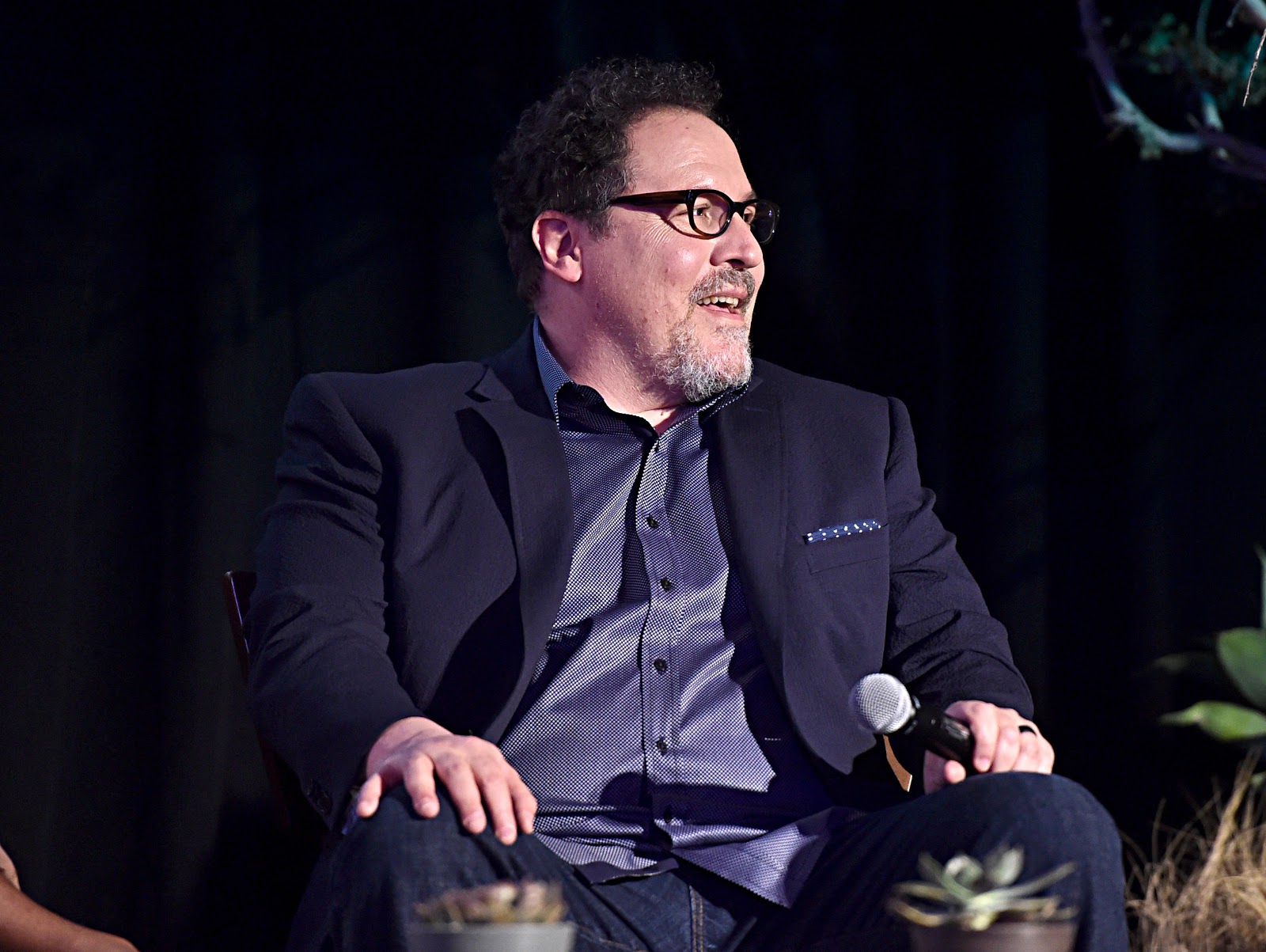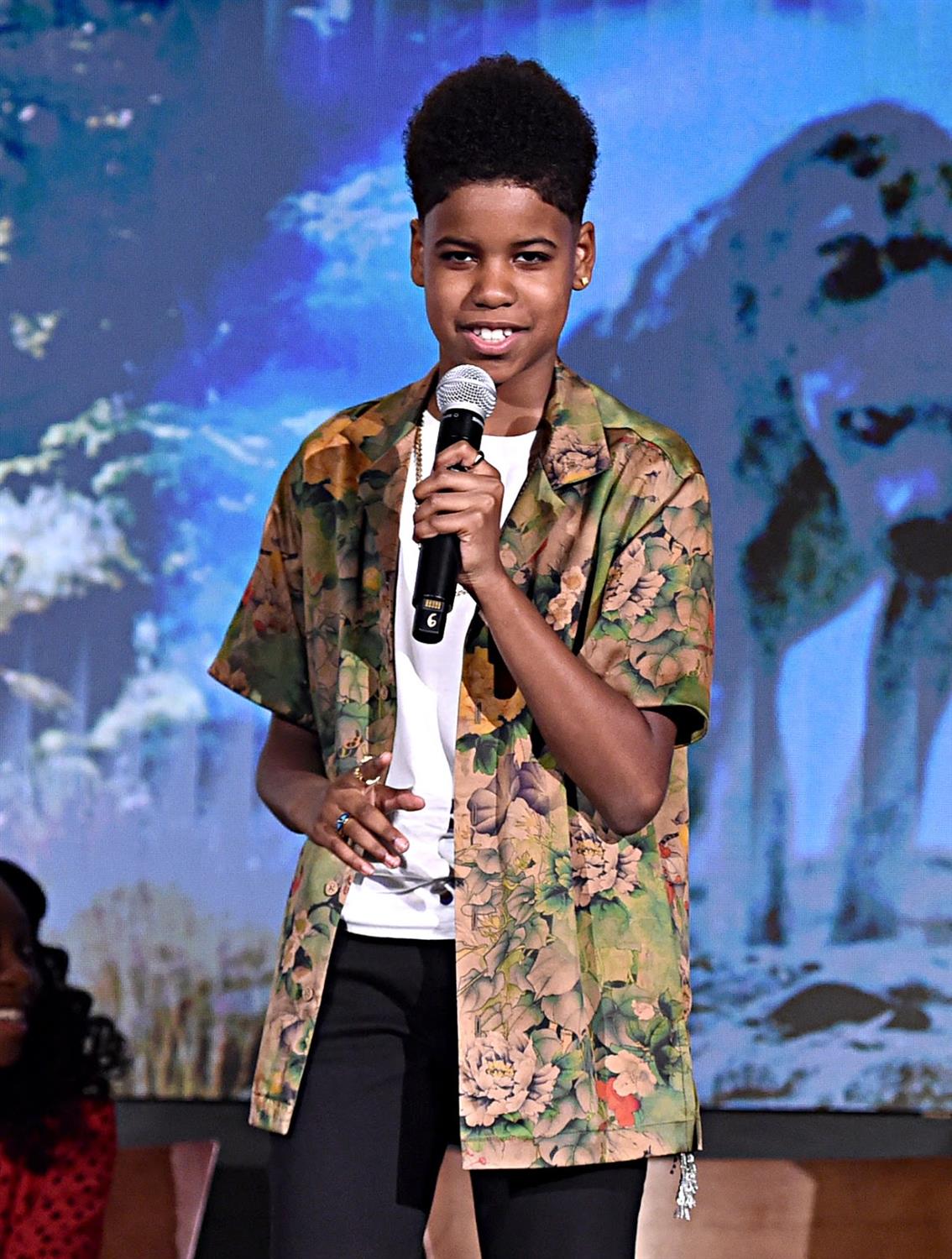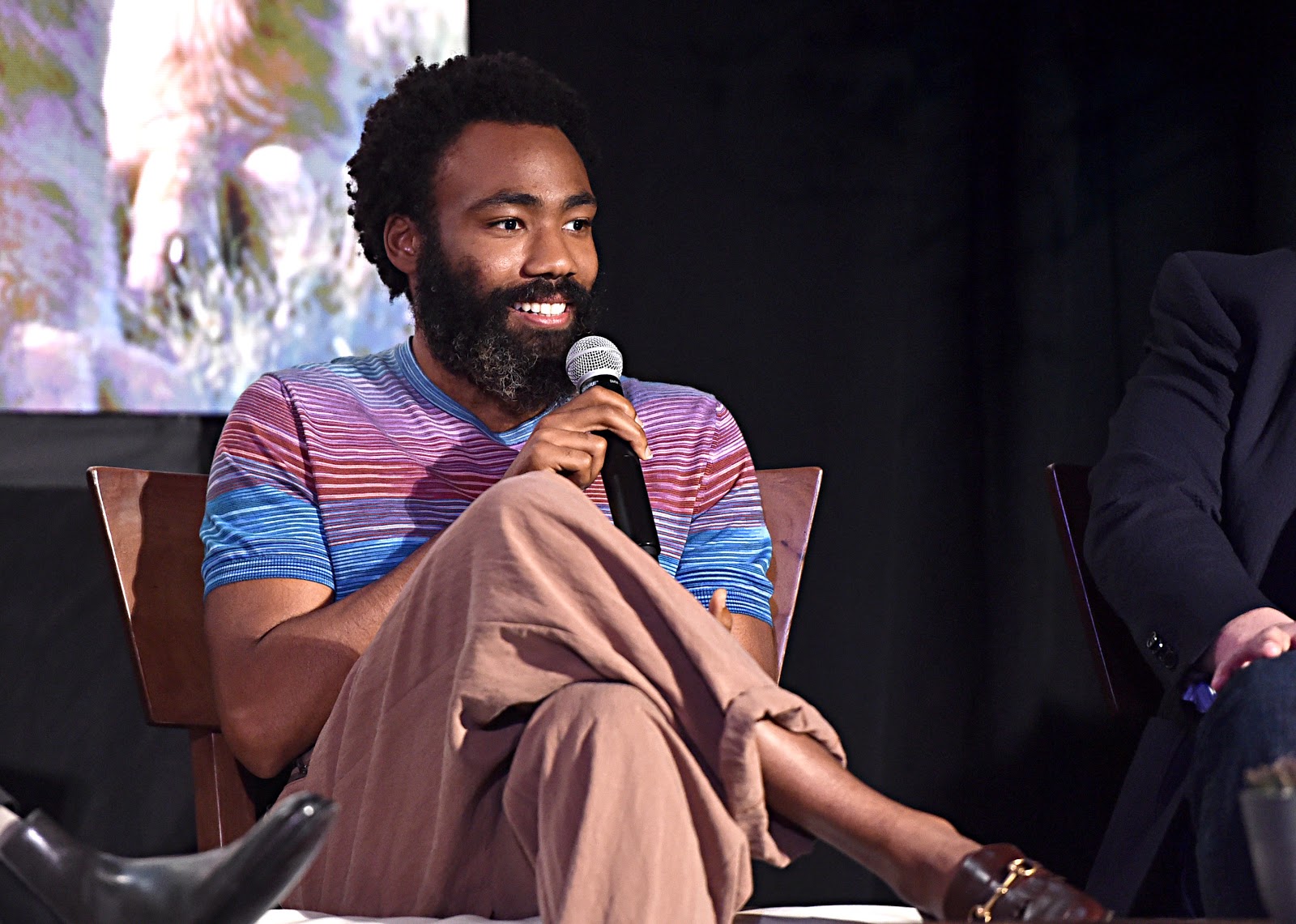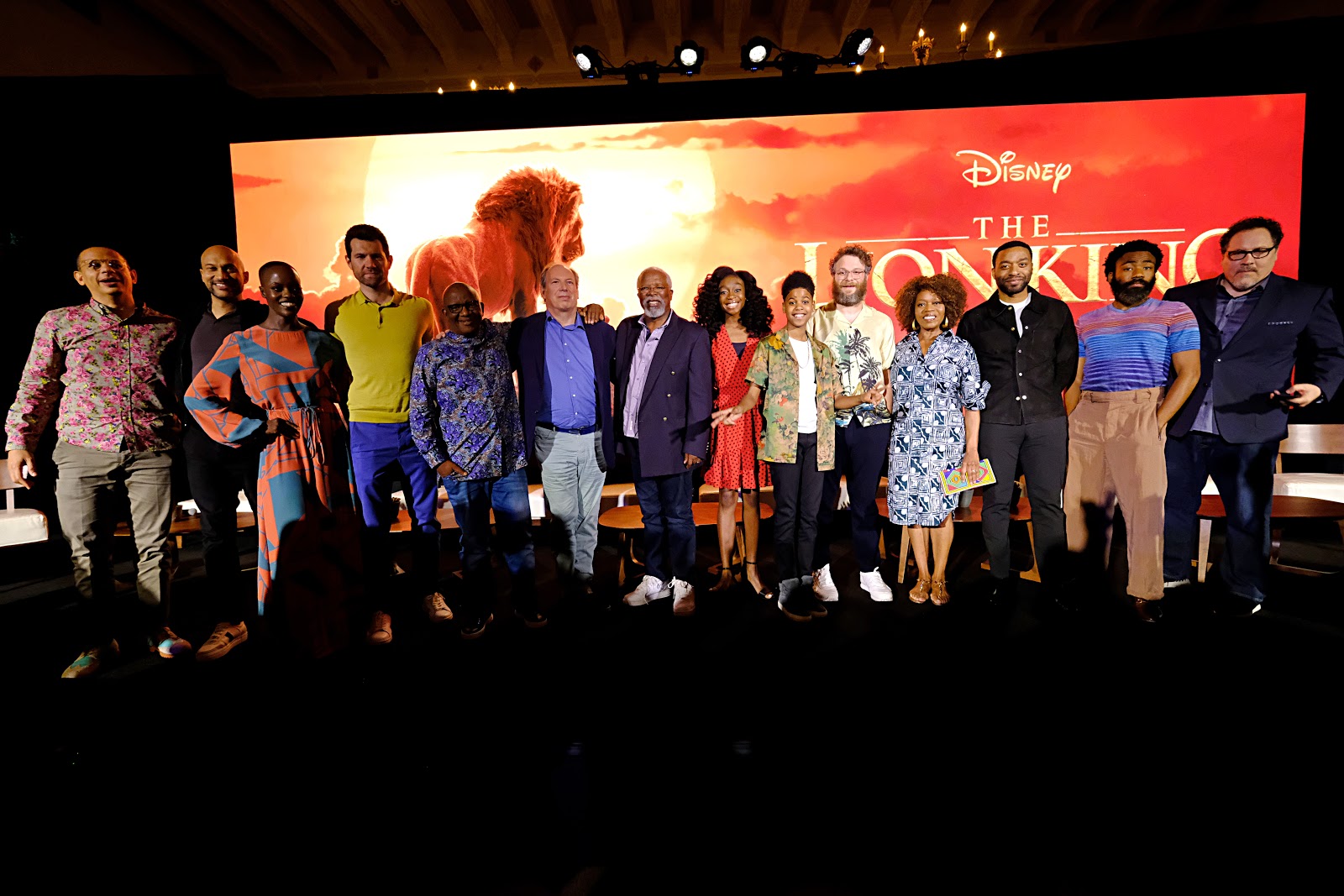After establishing himself as a reliable indie screenwriter and actor in the 90s, Jon Favreau began directing feature films, beginning with the buddy mafia comedy Made and continuing through the family hit Elf, two Iron Man movies, the personal dramedy Chef, and finally winding up a heavy-hitter at Disney, where he has now remade two of the company’s most beloved animated features: The Jungle Book and The Lion King.
Recently Jon Favreau has found himself standing on the cutting edge of filmmaking technology, employing state-of-the-art techniques to blend a live-action Mowgli seamlessly in with his many animal friends in 2016, and most recently pioneering a system that would help him (not to mention his talented team of visual effects artists) create photorealistic environments and characters to populate the Pride Lands. At last week’s Southern California press conference, Favreau spoke about how he and his crew used high-tech Virtual Reality software to shoot The Lion King as though it were filmed on location.
“That was actually one of the big differences between this and Jungle Book. [On that movie] we were essentially using the same motion capture technology for performers and cameras as had been developed ten years prior for Avatar. But towards the end of that there was a whole slew of consumer-facing VR products that were hitting the scene. And we started experimenting with it at the end of Jungle Book and realized that we could build this really cool system of filmmaking using game engine technology and this new VR technology.
“So we were essentially writing code, as we were going, for a multiplayer VR filmmaking game. And that way I could bring in people who don’t have any background in visual effects, we would design the entire environment, we took all of the recordings that we had from the actors, we would animate within the game engine, in this case it was Unity, and the crew would be able to put on the headsets, go in, scout, and actually set cameras within VR. And whenever anybody visited, I would pop them into the equipment.”
Eleven-year-old actor JD McRary, who plays Young Simba in the new film, recalled this experience very enthusiastically. “It was awesome. It’s like watching your favorite movie, but you’re in it. You’re in the movie. That’s exactly what it was. We put on the headsets, we had these little controller things in our hands, and we were just flying. We could fly! It was like we were Zazu. We were birds. We were whatever we wanted to be. And we saw everything: we saw the Pride Lands, we saw Pride Rock, we saw the watering hole, we saw the elephant graveyard, we saw it all. And it was so cool!”
Even Donald Glover, the usually-stoic, multitalented performer who takes on the voice role of Adult Simba in this iteration of The Lion King, couldn’t help but agree. “It was so awesome,” nodded Glover, ceding further elaboration to his younger counterpart.
As to whether this VR The Lion King experience or something similar might eventually find its way into the hands of consumers, Jon Favreau seemed cautiously optimistic, joking “It’s a very specific VR game that only works for making one movie. But we built all the assets from it, and so we’ve been talking, and I’m not sure where we’re at, about [the possibility of releasing] different VR-type experiences because, gaming and filmmaking, it’s all overlapping so much.”
Still, Favreau recognizes the absolute importance of assembling a top-notch cast and developing a compelling story before implementing technology when it comes to movie-making. “There were lots of steps to this process, and that’s why it took so long. And that’s part of why it was interesting over three years, because it was always different, each phase: the beginning was [just] pencils and voices. To me, casting, that’s the foundation of great cinematic storytelling.
“I didn’t come from the tradition of visual direction; I came up as an actor. It’s always been about storytelling and performance. You can’t compromise one iota on cast. You have to get the best people you can, because they’re the ones who are going to do everything. We just built off of our cast. It started with us just in a room, a black box theater, it was like theater rehearsal. It really was like what you would do when you grab the book for the first time and everybody walks around on the stage, and you start to figure your character out.
“I had them all performing together. We would get them in groups, we would have everybody mic'd, so that the sound was usable for the film, and we would have them interacting with one another and improvising. At that point, we would take a radio play that we would cut from that, and we would shoot video on long lenses, just to have reference of what they were doing with their faces. And we would give that to the animators, and the animators would take the choices that they made and interpolate into what a lion would do or a hyena would do.
“If we [had] just motion-captured their face and put a human expression on the animal’s face, I was concerned that that would blow the illusion of it being a naturalistic documentary. We looked at Planet Earth II, all of those Attenborough BBC documentaries, and how much emotion can be expressed without human performance, just through music and editorial and the stories you’re telling.
“And looking at movies like Babe, that was inspiration for how we did Jungle Book— how much expression and emotion could come out of those characters. So it really fell on the animators’ hands to try to figure out how to express [the cast’s] performances through the language of an animal’s emotive language.”
Even though Jon Favreau has gained a reputation for pushing the envelope of filmmaking technology, he’s insistent on his desire to retain on-set practices that have functioned for many decades in Hollywood. “We’re at a time with so much change and disruption, and I think the effort here was to keep the tradition, not just the tradition of the film and stage production that came before us, but the filmmaking tradition. Oftentimes when new technology comes online it disrupts an industry, but with just a little bit of effort we were able to build around the way filmmakers and film crews work.
“So a guy like Caleb Deschanel, [a] fantastic cinematographer who I’ve always wanted to work with, inviting him to do a very technically advanced film without any prior background in visual effects, and just saying, ‘Hey, we’ll make it so that you can just make a movie as you would have made The Black Stallion.’”
Favreau is quick to credit the hard-working crewmembers who made this technology a reality. “I can’t really take credit for all these innovations. It was [visual effects supervisor] Rob Legato and a whole team of people from MPC [Moving Picture Company]. But once we set this up, we would actually have cameras driven in VR space by a film crew that was in a [big] room, with dollies and cranes and assistant directors, script supervisors, set dressers… So we kept the same film culture and implanted it, using this technology, into the VR realm.
“And so, although the film was completely animated as far as performances went, it allowed a live-action film crew to go in and use the tools they were used to. Part of what’s so beautiful about the lighting, the camerawork, the shots of the film, is that we were able to inherit a whole career of experience and artistry from our fantastic team. I think it’s nice to look at technology as an invitation for things to progress, and not always something that’s going to change the way everything came before it. I think there’s a balance between innovation and tradition.”
Disney’s The Lion King opens in theaters nationwide this Friday, June 19.




